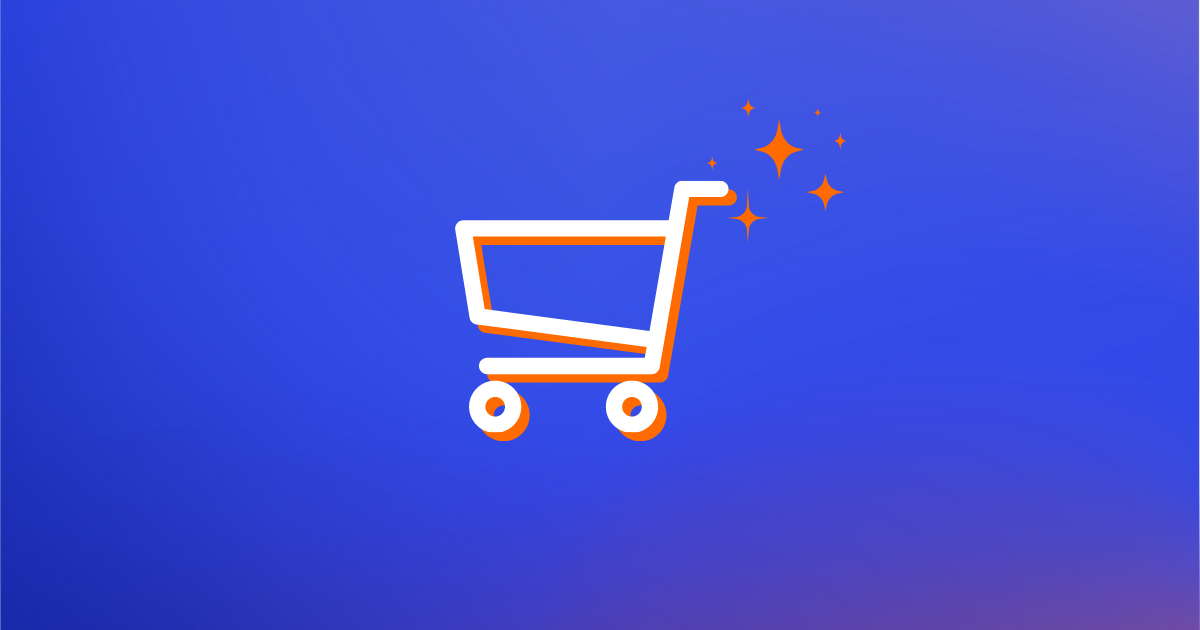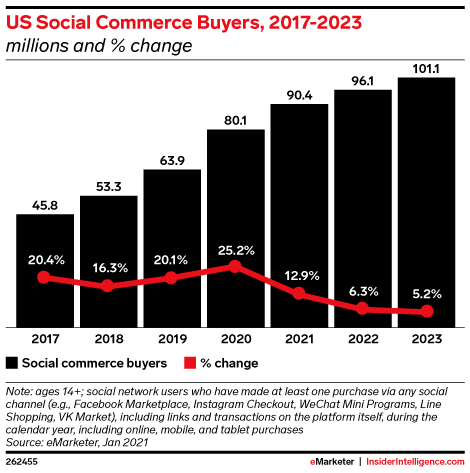
7 Ecommerce Trends to Watch in 2022
Contents
Ecommerce trends tend to come and go as quickly as a bestselling product, and 2022 will be no exception—especially as the pandemic continues to keep consumers (and brands) guessing.
While vaccines gave many consumers peace of mind to return to in-person shopping last year, ecommerce still stood strong. Supply chain bottlenecks became the talk of the boardroom and the Thanksgiving dinner table, leading to a holiday shopping season full of lessons for business owners everywhere. This year, retailers will be taking a hard look at their 2021 experiences to avoid making costly mistakes and to take advantage of emerging trends.
Social Commerce
The social commerce space is estimated to be worth a staggering $1.2 trillion by 2025, growing three times as fast as traditional commerce. Plus, social media is the driving force behind 71% of consumer buying decisions. So, retailers, if social media isn’t already part of your brand strategy, make sure 2022 is the year you get in on the action.
Two key social channels launched shopping features in 2021: Twitter shopping was released to select accounts, and TikTok partnered with Shopify to capitalize on the social app’s existing influence on users’ shopping habits (#TikTokMadeMeBuyIt, anyone?). With these two giants joining the social commerce sphere, 2022 is poised to be huge for social shopping.

Source: eMarketer
TikTok and Twitter join existing social commerce platforms like Instagram, with its recently launched “Shop” tab and store pages for business accounts, and Pinterest, the social channel where 89% of users are browsing with the intent to purchase.
Supply Chain Improvements
Unless you were living under a rock in 2021, there was no escaping the news about supply chain chaos. With logjams at ports, labor and inventory shortages, and shipping delays, retailers of all sizes saw the effects of this global crisis. Fortunately, many businesses—and the U.S. government—are putting strategies into place to avoid a repeat of last year’s supply chain challenges.
At the national level, the Infrastructure Investment and Jobs Act passed in November 2021 includes a focus on rebuilding the country’s ports and strengthening the supply chain. Individual retailers will also be investing in their own supply chains. You can bet on ecommerce businesses exploring new fulfillment and shipping options, inventory storage, and product sourcing locations.
2021 showed the risks of putting all your business’s fulfillment eggs in one basket. Sellers who relied on a single vendor, warehousing partner, or shipment service were especially in the lurch once the dominoes began to fall. In 2022, expect even the smallest businesses to expand their vendors and partnerships in case their primary sources fall through.
Buy Now, Pay Later (BNPL)
You can’t pass an online checkout page these days without seeing an offer to split your payment into multiple installments. Buy now, pay later (BNPL) took ecommerce by storm in 2021, and all signs indicate that it isn’t slowing down anytime soon. Plus, BNPL has been popping up in brick-and-mortar shops across the country, showing that consumers are eager for that lightened impact on their wallet.
Although BNPL’s initial appeal was with cash-strapped Gen Zers and Millennials, expect BNPL brands to expand their appeal to other generations this year. Older generations are familiar with payment plans at department stores and furniture shops, so the jump to installments for smaller purchases is not a big one. Plus, with inflation continuing to rise, BNPL plans may help shoppers make purchases they otherwise would have put off.
NFTs
If you’ve been putting off learning about NFTs, 2022 is the year to do your homework. The short answer: NFTs (non-fungible tokens) are unique, digital assets that are bought and sold online, often using cryptocurrency. With an existing shoppable online presence, ecommerce businesses are perfectly poised to take advantage of this growing craze. Plus, by incorporating these digital tokens into your ecommerce strategy, there’s no need to store and manage additional physical inventory.
Shopify took note of NFTs’ potential in the ecommerce sphere by announcing its NFT beta program in late 2021. A partnership with blockchain company GigiLabs enables Shopify Plus customers the ability “to create and sell NFTs on their Shopify storefront in minutes without any prior development or blockchain experience,” according to GigiLabs. As the Shopify beta program expands, expect NFTs to take an even greater role in the platform as 2022 progresses.
Shift Away from Social Ads
Nothing rattled marketers more in 2021 than Apple’s April iOS update that required apps to ask users if they could be tracked. Unsurprisingly, most users (80-90%) opted out, taking away a key piece of information brands use to target customers.
What does this mean for ecommerce businesses? Many will shift away from advertising on social media, if they haven’t already. Direct-to-consumer (DTC) brands especially saw the detrimental effects. Without being able to reach their customers, retail marketers will have to shift their attention elsewhere to get returns on their ad investments. Expect an increase in print advertising, email marketing, and influencer marketing this year instead.
Omnichannel Commerce
If 2021 retail had a buzzword, it was “omnichannel.” After the ecommerce-heavy year of 2020, shoppers were eager to visit stores in person but still heavily reliant on pandemic-era perks like BOPIS and curbside pickup. Plus, consumers continued to do a large part of product research online by reading reviews and comparing prices. With the rise of social commerce and mobile commerce, the digital and physical worlds continued to blend in retail.
>>Need a refresher on omnichannel? Here’s our quick breakdown.

Expect the omnichannel universe to expand even further in 2022 with improvements to the “whenever, wherever” customer experience across channels. Brands will be taking note of changes in shopping behavior and ensuring their apps, websites, customer support, and social channels are all in sync. Look for even more personalization when it comes to marketing campaigns, like a follow-up email to buy something you were browsing on social media.
Sustainability Strategies
Today’s shoppers, especially younger generations, are increasingly looking to brands to prioritize environmentally friendly practices. With climate change a growing concern for many consumers, it will be increasingly important for retailers to adopt sustainability strategies in 2022.
At the individual level, consumers are taking sustainable shopping approaches like buying products that are longer-lasting, secondhand, recyclable, or zero waste. According to eMarketer, 45% of shoppers buy exclusively from “brands that concentrate on circular and sustainable practices.” Expect that number to only increase in the years to come.
The resale market exploded in 2021 with brands like Madewell, Patagonia, and IKEA buying back their own used products to resell to customers. These brands recognized the missed opportunity of letting these resale items go through third-party resellers like consignment shops and eBay instead of their own businesses. The result is a strategy that benefits the brand, customer, and the environment—so expect more retailers to take part in 2022.
By guest contributor Leah Allen-Manning



 The Webgility Team
The Webgility Team


